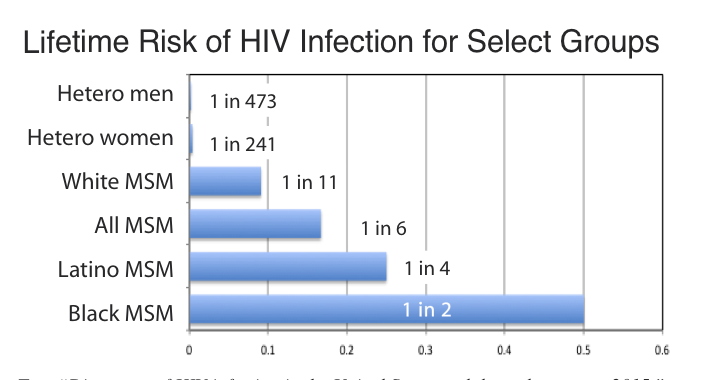OVER THE PAST DECADE, we’ve seen a great deal of progress on HIV/Aids in the U.S. Data released by the U.S. Centers for Disease Control and Prevention in late 2015 indicate that diagnoses of HIV in the U.S. declined significantly over the last decade. Rates of new HIV diagnoses for the general population dropped nineteen percent between 2005 and 2014, from about 49,000 new HIV diagnoses each year to about 40,000. With some populations hard-hit by HIV, we saw even greater improvements: new diagnoses were down 42 percent for mostly heterosexual black women, down 35 percent for heterosexual women and men of all races, and down 65 percent for people who inject drugs. White gay and bisexual men experienced an eighteen percent decline in new diagnoses from 2005 to 2014.
However, black and Latino gay and bisexual men actually saw an increase in HIV diagnoses of 22 percent and 24 percent, respectively, over the same time period. New diagnoses for thirteen- to 24-year-old black men who have sex with men (MSM) were up 87 percent from 2005 to 2014. Even though white gay and bisexual males outnumber their black counterparts by a ratio of four or five to one, in 2014 about 10,000 black MSM of all ages were diagnosed with HIV compared to about 8,000 whites. Transgender women also face a disproportionate burden of HIV, with blacks experiencing the highest rates of infection.







